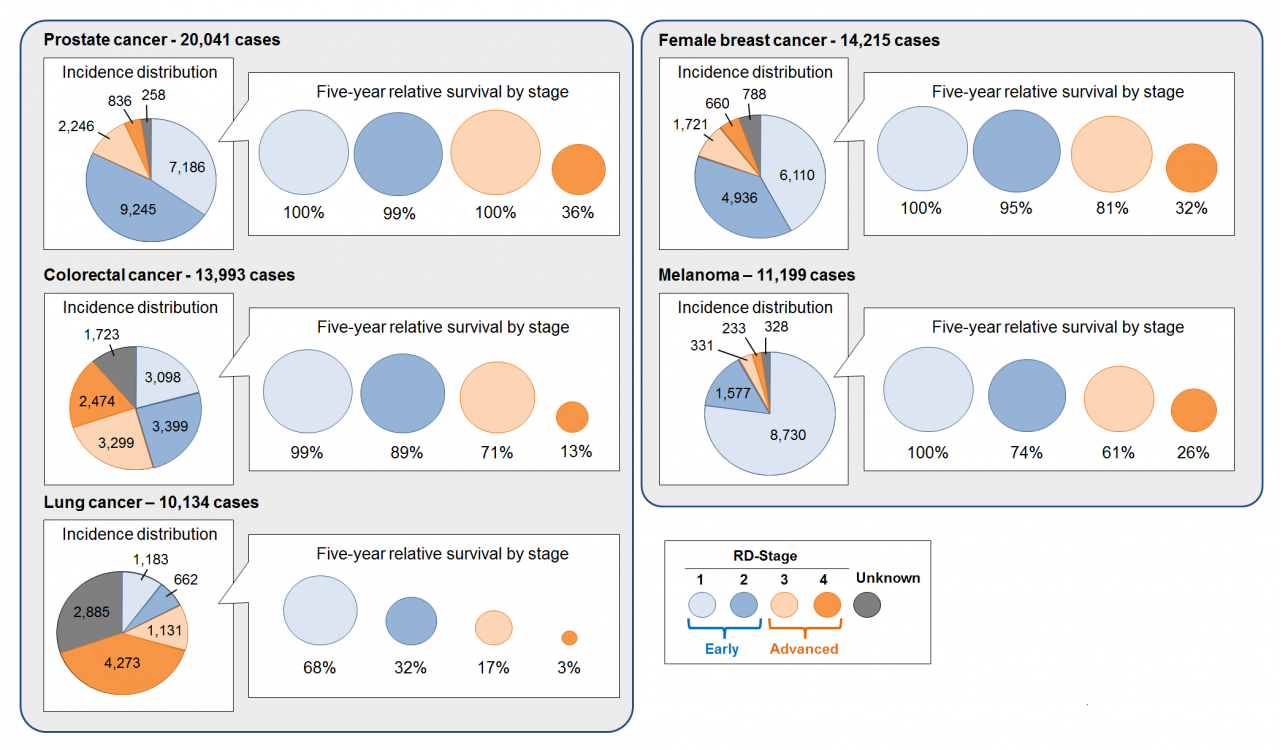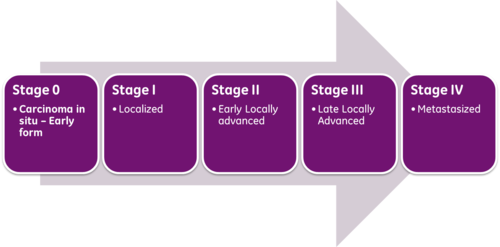Survival by cancer stage at diagnosis
Cancer Australia continues to develop the National Cancer Control Indicators (NCCI) resource with a new data release presenting population-level national data on relative survival by stage at diagnosis for the 5-year period 2011-2016 for Australia’s highest incidence cancers. The data is available by age, gender, socioeconomic status (SES) and location.

The findings confirm that outcomes for Australian cancer patients mirror those reported for other jurisdictions. The positive impact of national screening programs on detecting cancers at earlier stages is clearly evident.
Stage at diagnosis
- Over 75% of newly diagnosed cases of breast and prostate cancers and melanomas were stage 1 or 2 cancers.
- The proportion of colorectal cancers diagnosed at more advanced stages was higher in people aged <50 years than those 50 years and over.
- In 42% of newly diagnosed cases of lung cancer the disease had already metastasized (stage 4). Only 18% were diagnosed at early stages 1 or 2.
- For breast cancer, people aged 50 years and over had a higher proportion of stage 1 cancers at diagnosis than those aged less than 50 years.
- For lung cancer, melanoma, and prostate cancer, persons aged less than 50 years had a higher proportion of stage 1 cancers than persons aged 50 years and over.
- The proportion of cancers diagnosed at early stages was lower in remote and very remote areas compared to major cities and regional areas.
Survival by stage at diagnosis
- For metastatic cancers (stage 4), survival was higher among people living in major cities compared to regional areas at 1 year (20% compared to 16%), 3 years (6% compared to 4%) and 5 years from diagnosis (3% compared to 2%).
- For metastatic cancers (stage 4), survival was higher among people living in the highest SES areas (SES5, 25%) compared to lower SES areas (SES1-3, 17%) at 1 year from diagnosis.
Males had lower survival by stage at diagnosis than females
- For stage 1 cancers at 5 years from diagnosis, survival for males was 62% compared to 75% for females.
- For stage 3 cancers at 1 year (survival for males 54% compared to females 64%), 3 years (21% compared to 32%) and 5 years from diagnosis (14% compared to 22%).
- For stage 4 cancers at 1 year from diagnosis (18% compared to 22%).
Survival progressively decreased with increasing time from diagnosis
Source: https://ncci.canceraustralia.gov.au/outcomes;
Cancer Australia’s Stage, Treatment and Recurrence (STaR) project. Cancer Australia, the state and territory population based cancer registries, the Australasian Association of Cancer Registries, and Australian Institute of Health and Welfare have collaborated to collect and combine data on incidence by stage at diagnosis data with mortality data from the National Death Index (NDI), for the top five high incidence cancers.



